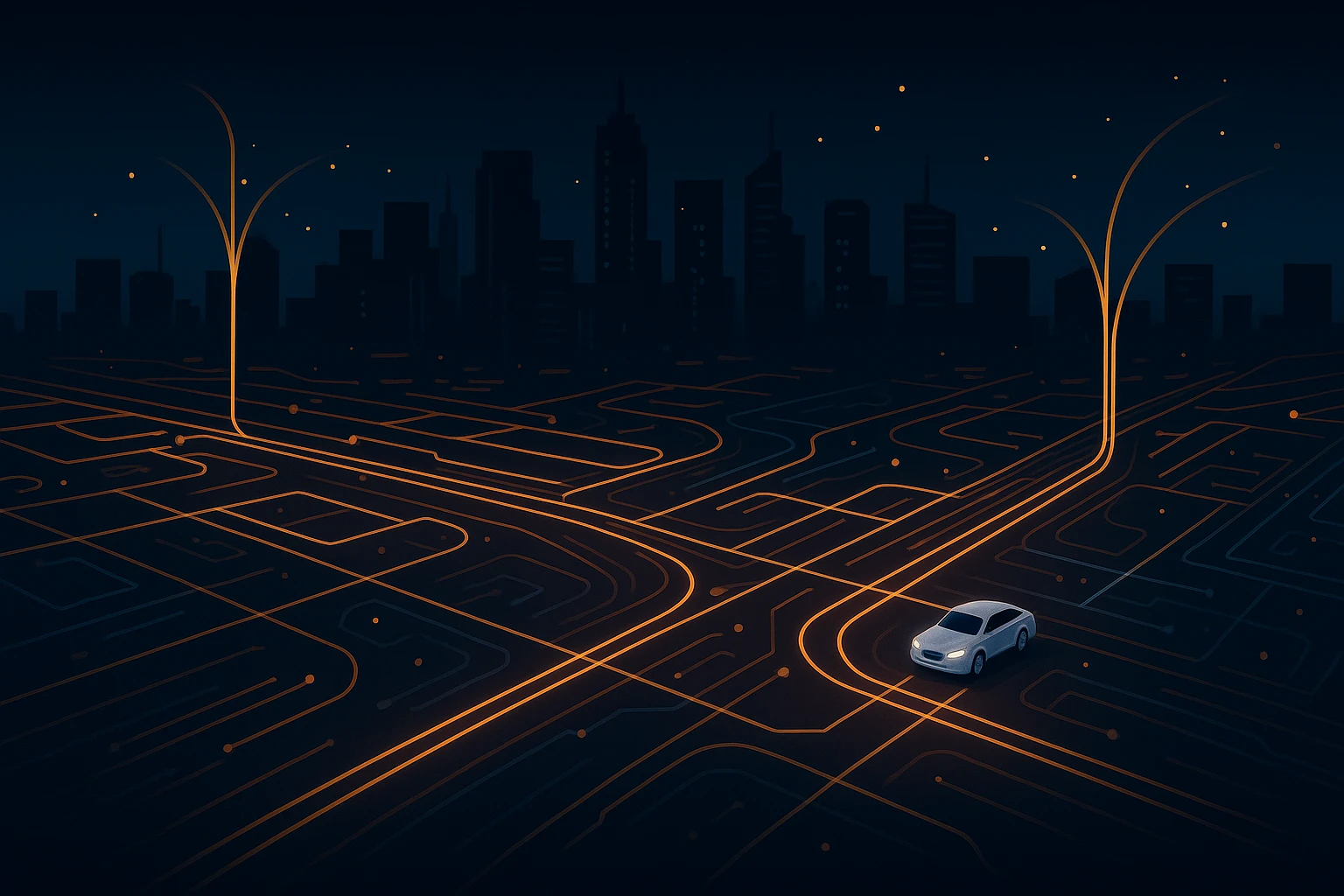
Intelligent Transportation & Mobility
As cities expand, congestion and pollution strain infrastructure and quality of life. Artificial intelligence provides tools to manage and optimise transportation systems. Real‑time data from GPS units, mobile phones and vehicle sensors feed into classification algorithms that identify traffic patterns, regression models that predict travel times and clustering methods that group similar routes. These insights allow traffic lights to adapt dynamically, ride‑sharing platforms to pool passengers efficiently and logistics companies to minimise fuel consumption.
Self‑driving vehicles rely on computer vision, LiDAR and radar fused through neural networks to perceive their surroundings. Machine learning planners compute optimal paths that account for safety, speed and energy use. Public transit agencies use predictive analytics to adjust bus and train schedules based on demand forecasts and event calendars. Autonomous shuttles operate in geo‑fenced districts, providing first‑ and last‑mile connections. With AI, transportation becomes more connected, responsive and sustainable.
Successful deployments are taking shape worldwide. In Stockholm, adaptive signal control has reduced idle times by integrating AI predictions with traditional traffic models. In Singapore, a unified mobility platform coordinates taxis, metro lines and on‑demand shuttles, giving travellers real‑time recommendations. In the Netherlands, smart cycling infrastructure uses sensor data to illuminate bike lanes and allocate green times at intersections. These projects demonstrate how data‑driven approaches can cut commute times and emissions while improving user experience.
Yet challenges remain. Biased data can lead to inequitable service, leaving low‑income neighbourhoods underserved. Privacy issues arise when tracking individual devices. Uncertainty about liability and safety slows the rollout of autonomous vehicles. To build trust, transportation planners should engage communities, publish open data and ensure algorithms align with public goals. Human oversight and robust regulation are vital so that AI augments mobility without compromising fairness or security.